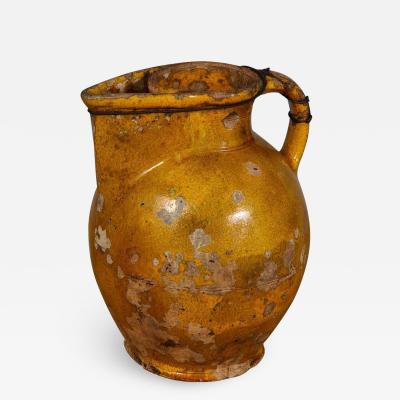What is it Worth? Scrimshaw Teeth
 | |
| Scrimshaw Sperm-Whale Tooth. Shubael S. Spooner; Circa 1830–1850. Kendall Collection. Courtesy of New Bedford Whaling Museum. Photography by Hayato Sakurai. The scene of “Domestic Happiness” on this 7 3/4-inch tooth was engraved by a sailor on the whaling ship Ceres. For years, scrimshaw dealers and collectors have referred to this sailor as the “Ceres Artisan.” Stuart M. Frank, director of the Kendall Institute at the New Bedford Whaling Museum, says recent research suggests that there were five different “Ceres Artisans” and that this example was made by Shubael S. Spooner, whaling master of Fairhaven and New Bedford from 1832–1859. Dealer Nina Hellman says that in the early 1990s, “Ceres” teeth sold for $8,000–$9,000, but that a similar example to the one illustrated here sold last year for $48,000. |
Sailors have long been associated with the art of storytelling. In the 1800s, during the height of American whaling, one remarkable group of sailors told their stories in whalebone and whale’s ivory teeth, engraving pictures that are truly worth a thousand words. Today, those works, collectively categorized as scrimshaw, are among the most highly collectible pieces of nautical antiques.
Although scrimshaw appears in many forms, from pie crimpers to corset busks, whale’s teeth are particularly sought after, says antiques dealer Nina Hellman, of Nina Hellman Marine Antiques, Nantucket, Massachusetts. Prices range from less than $1,000 to $75,000 or more, with ongoing scholarship increasing the interest of collectors and the values of scrimshaw.
Made as gifts, scrimshaw teeth depict the images that were most important to a sailor: whaling scenes, ships, women, patriotic motifs, idyllic homesteads. “Whaling scenes are among the most desirable subjects,” says Hellman, “and when a maker is identified, the value increases.” Seventy-five thousand dollars was the amount paid at a private auction recently for a “Susan’s Tooth,” a designation given to the thirty-six teeth engraved by Nantucket whaleman Frederick Myrick (1808–1862) between December 1828 and September 1829 while aboard the ship Susan.
 | |
| Scrimshaw Sperm-Whale Tooth. Anonymous scrimshander. Circa 1840–1860. Kendall Collection. Courtesy of New Bedford Whaling Museum. Photography by M. Zilberstein. The polychrome whaling scene on this 4 1/2-inch tooth was engraved by an anonymous American whaleman in the mid-1800s. Whaling scenes are the most desirable images on scrimshaw teeth. Examples similar to this sell for around $6,500, says dealer Nina Hellman, while a 5-inch tooth with a nice floral decoration would have a value of $800–$1,200. |
Hellman notes that in some cases the work of a scrimshander (as artists in the medium are called) can be identified even though his name is not known. “There are teeth by the ‘Eagle Portraitist’ or the ‘Banknote Engraver’ or the ‘Ceres Artisan’,” she says, explaining that such teeth have been selling for as much as $30,000–$50,000.
As work by such experts as Stuart M. Frank, director of the Kendall Institute at the New Bedford Whaling Museum, and his colleague Donald E. Ridley continues, more scrimshaw artists are being identified and their works are increasing in value. Scrimshaw teeth by Nantucket whaleman Edward Burdett (1805–1833) are a case in point; one was recently discovered during an airing of PBS’s Antiques Roadshow, says Frank, “and it was as if a signed Rembrandt had been found.” Frank places the value of a tooth engraved by Burdett in the same category as a Susan’s Tooth by Myrick.
Creating a scrimshaw tooth required patience and skill and took several steps. A typical process involved first making a pencil or ink drawing on paper, then laying the drawing on top of the tooth and poking pinholes through it to make an outline on the tooth. Next, a sailor would carve the drawing into the tooth using a sharp knife, and finally he would fill the grooves and indentations with black or colored pigments.
For all the artistry and romance that engraved scrimshaw teeth represent, they weren’t a prized collector’s item until fairly recently. Dealers and scholars credit John F. Kennedy’s love of scrimshaw as the catalyst that sparked interest in widespread collecting. For today’s buyer, there are many books on the subject and a visit to the scrimshaw collections at any of the following five museums is enlightening: New Bedford Whaling Museum (includes the Kendall Collection), New Bedford, Massachusetts; Nantucket Historical Association, Nantucket, Massachusetts; Peabody Essex Museum, Salem, Massachusetts; Mystic Seaport, Mystic, Connecticut; and South Street Seaport, New York. The Kendall Institute is hosting its annual Scrimshaw Collectors’ Weekend June 28–30. For more information, visit www.whalingmuseum.org.
Suggested Reading:
Flayderman, E. Norman. Scrimshaw and Scrimshanders, Whales and Whalemen. New Milford, Conn.: N. Flayderman & Co., Inc., 1972.
Frank, Stuart M. Dictionary of Scrimshaw Artists. Mystic, Conn.: Mystic Seaport Museum, 1991.
____________ More Scrimshaw Artists. Mystic, Conn.: Mystic Seaport Museum, 1998.
Hellman, Nina, and Norman Brouwer. A Mariner’s Fancy: The Whaleman’s Art of Scrimshaw. New York: South Street Seaport and Balsam Press, 1992.
Jill Connors is a freelance writer who specializes in collecting, interior design, and decorative arts. Her freelance work appears in such magazines as Country Home, Interior Design, and This Old House.
This is an archived Antiques & Fine Art magazine article. Fully digitized back issues of Antiques & Fine Art magazine are available at www.afamag.com. AFA is affiliated with Incollect.com.
 |































